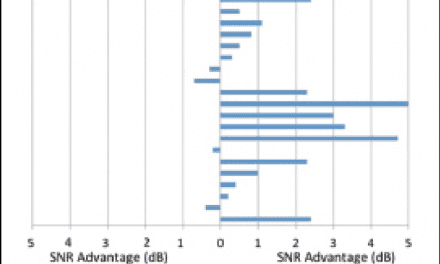Researchers writing in the journal The Laryngoscope, reveal that childhood obesity leads to an increased risk of sensorineural hearing loss (SNHL).
The authors, Lalwani et al, looked at cross-sectional data from the National Health and Nutrition Examination Survey, 2005 to 2006, for 1,488 participants who were 12 to 19 years old.
Subjects were classified as obese if their BMI???95th percentile. SNHL was defined as average pure-tone level greater than 15 dB for 0.5, 1, and 2 kHz (low frequency) and 3, 4, 6, and 8 kHz (high frequency).
Compared to normal weight participants (BMI 5%–85%), obesity in adolescents was associated with elevated pure-tone hearing thresholds and greater prevalence of unilateral low-frequency SNHL (15.2 vs 8.3%). In multivariate analyses, obesity was associated with a 1.85 fold increase in the odds of unilateral low-frequency SNHL (after controlling for multiple hearing-related covariates).
The authors concluded, “Obesity in childhood is associated with higher hearing thresholds across all frequencies and an almost 2-fold increase in the odds of unilateral low-frequency hearing loss. These results add to the growing literature on obesity-related health disturbances and also add to the urgency in instituting public health measures to reduce it.”
The study, “Obesity is associated with sensorineural hearing loss in adolescents,” is published online in the June 2013 edition of The Laryngoscope. It was also presented at the Annual Meeting of The Triological Society, San Diego.
SOURCE: The Laryngoscope




